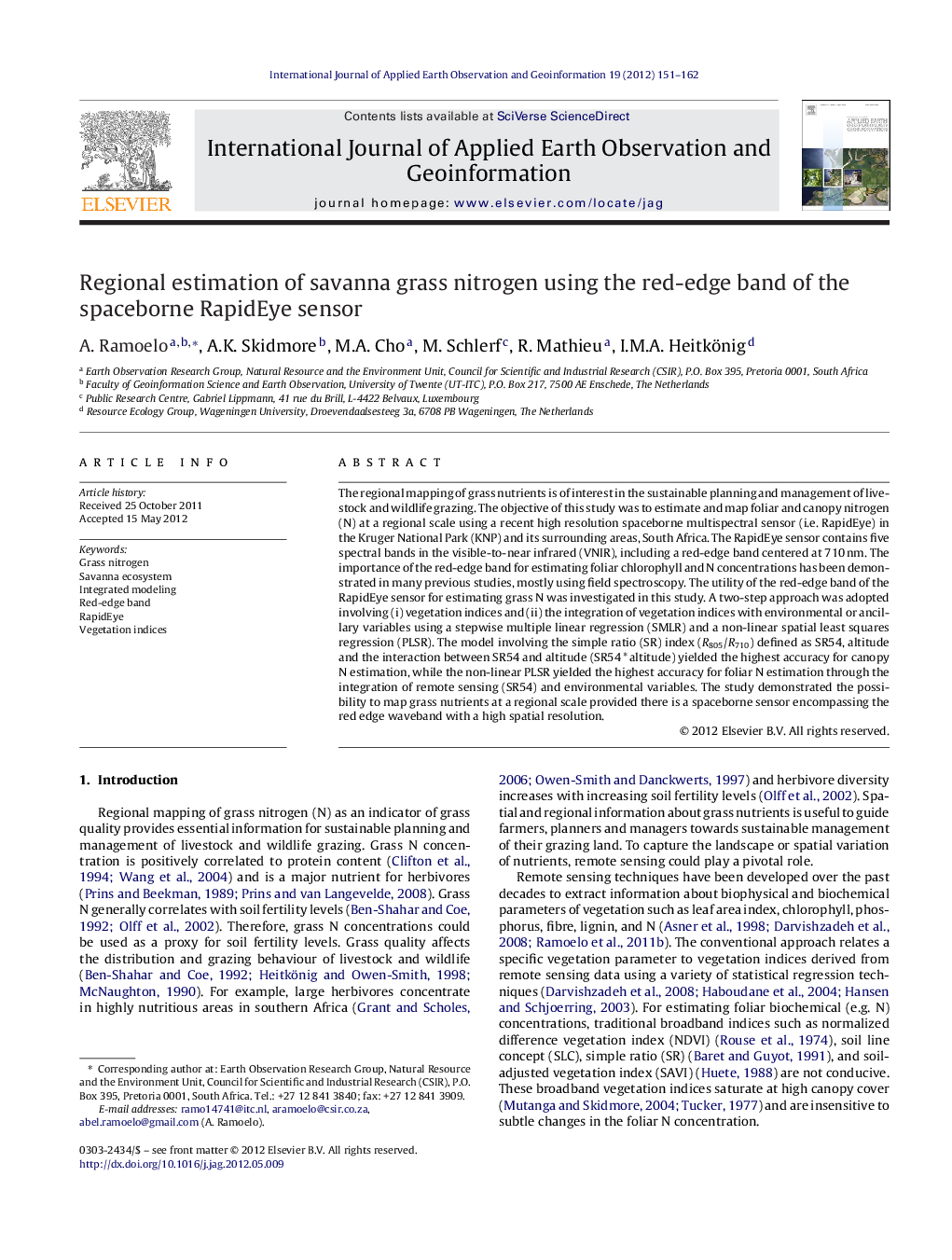| Article ID | Journal | Published Year | Pages | File Type |
|---|---|---|---|---|
| 4464979 | International Journal of Applied Earth Observation and Geoinformation | 2012 | 12 Pages |
The regional mapping of grass nutrients is of interest in the sustainable planning and management of livestock and wildlife grazing. The objective of this study was to estimate and map foliar and canopy nitrogen (N) at a regional scale using a recent high resolution spaceborne multispectral sensor (i.e. RapidEye) in the Kruger National Park (KNP) and its surrounding areas, South Africa. The RapidEye sensor contains five spectral bands in the visible-to-near infrared (VNIR), including a red-edge band centered at 710 nm. The importance of the red-edge band for estimating foliar chlorophyll and N concentrations has been demonstrated in many previous studies, mostly using field spectroscopy. The utility of the red-edge band of the RapidEye sensor for estimating grass N was investigated in this study. A two-step approach was adopted involving (i) vegetation indices and (ii) the integration of vegetation indices with environmental or ancillary variables using a stepwise multiple linear regression (SMLR) and a non-linear spatial least squares regression (PLSR). The model involving the simple ratio (SR) index (R805/R710) defined as SR54, altitude and the interaction between SR54 and altitude (SR54 * altitude) yielded the highest accuracy for canopy N estimation, while the non-linear PLSR yielded the highest accuracy for foliar N estimation through the integration of remote sensing (SR54) and environmental variables. The study demonstrated the possibility to map grass nutrients at a regional scale provided there is a spaceborne sensor encompassing the red edge waveband with a high spatial resolution.
► Simple ratio (SR) index (R805/R710), altitude and the interaction between SR54 and altitude yielded higher accuracy for canopy N estimation. ► Whilst the non-linear PLSR yielded highest accuracy for foliar N estimation through the integration of remote sensing (SR54) and environmental variables. ► Regional estimation and mapping of savanna grass nutrients are possible with an advent of new remote sensing data such as RapidEye.
